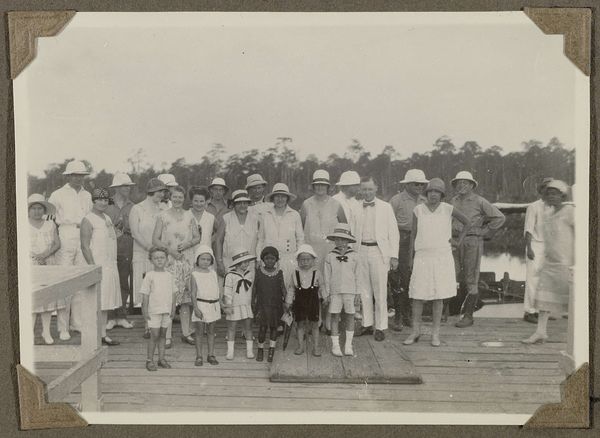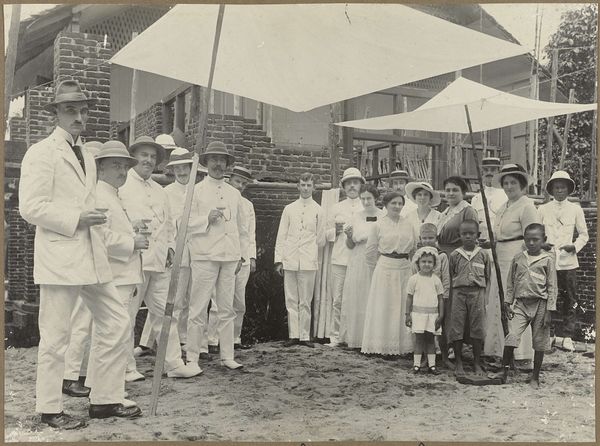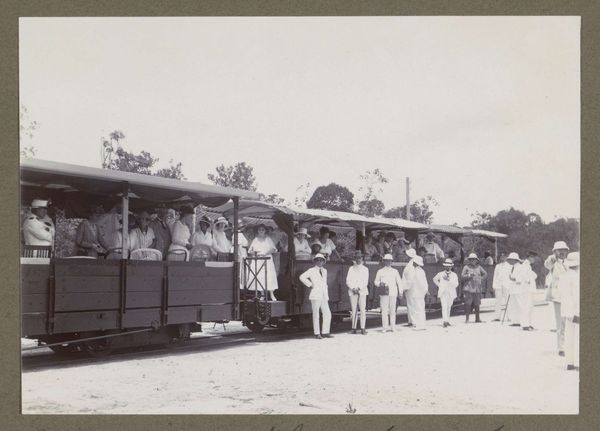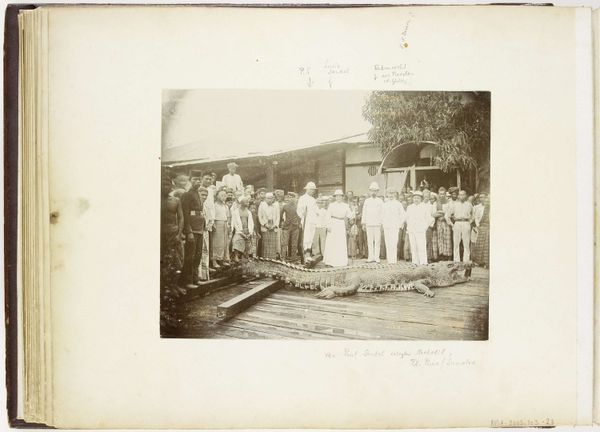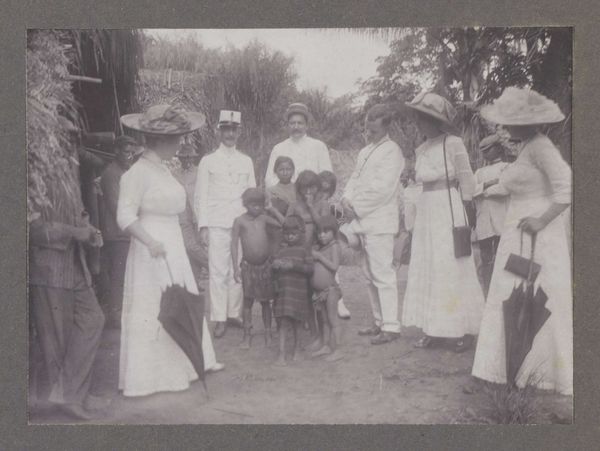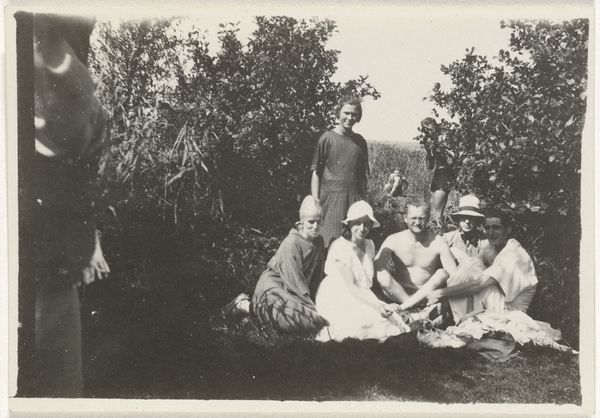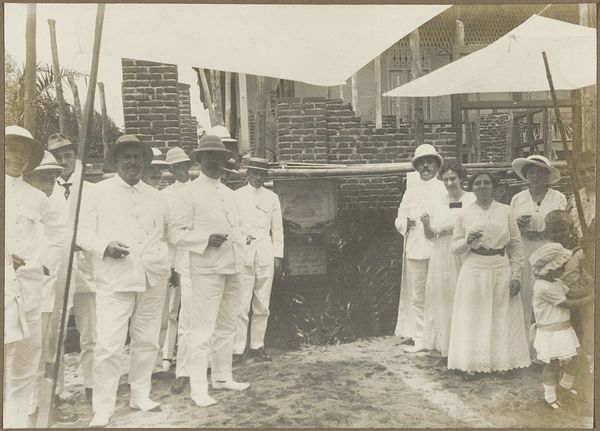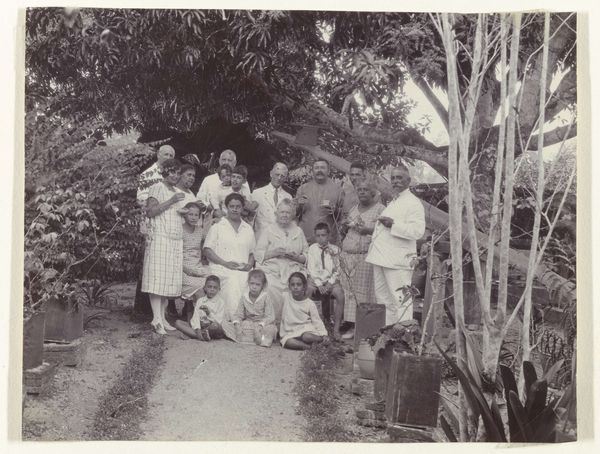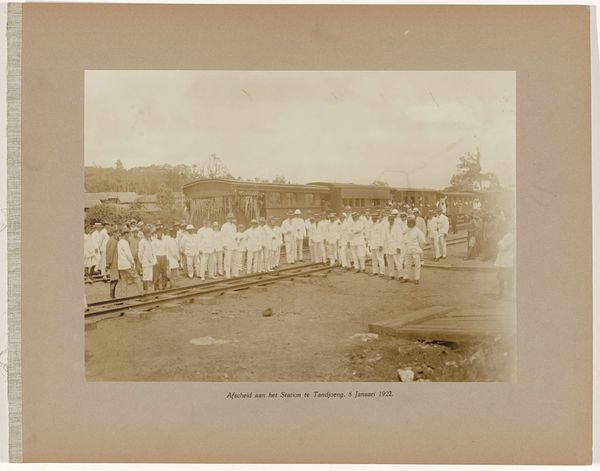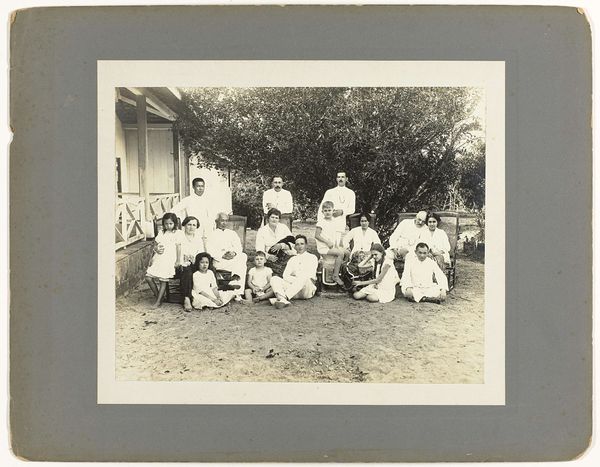
Gouverneur Aarnoud van Heemstra (midden) met een gezelschap bij Kwakoegron in Suriname Possibly 1923 - 1927
0:00
0:00
photography
#
portrait
#
landscape
#
photography
#
historical photography
#
group-portraits
#
modernism
Dimensions: height 118 mm, width 170 mm
Copyright: Rijks Museum: Open Domain
Curator: Looking at this photograph, I’m immediately struck by its staging, it feels almost theatrical. The uniformity of dress set against the unfamiliar landscape creates such a stark contrast. Editor: This is a fascinating image, indeed. What we’re seeing is "Gouverneur Aarnoud van Heemstra (midden) met een gezelschap bij Kwakoegron in Suriname," a photograph taken sometime between 1923 and 1927 by Augusta Curiel. The picture captures a colonial governor surrounded by a group of people near a river in Suriname. Curator: Yes, the whiteness is… deafening. All that white fabric in the tropics—it screams dominance and control. Even the pose feels so deliberately constructed to convey power, particularly that central figure seated and the other standing, grouped on this riverside as though posing for the ages. What does that staging evoke for you? Editor: The composition, you are correct, creates a visual hierarchy. The governor's placement suggests authority, and their clothing, of course, symbolizes European identity, which, back then, signified order and civility in opposition to the presumed chaos and savagery of the Suriname landscape. The visual contrast implies more than it states, doesn't it? I also wonder about the intended audience for such a photograph. Was it meant to reassure those back home in the Netherlands? Curator: I think it would surely reinforce their notions about colonial life and their own important roles in it. Beyond just this aspect, however, there's something inherently surreal about transporting such Western visual codes into a completely different setting. It shows the psychology of cultural imposition—how symbols of power attempt to overwrite the inherent identity of place. Editor: This relates directly to the history of colonial photography itself. Curiel's work, while documentary in some ways, participated in shaping and reinforcing colonial narratives about the region. Photos like this became part of a visual archive justifying colonial projects by picturing an exotic land "brought to order". Even as records, they remain powerful relics shaped by the hands, or in this case, the lenses, of history. Curator: True. These types of pictures helped invent a global visual language about colonisation that remains powerfully imprinted upon cultural memory, I think, to this day. A language of light and dark, quite literally! Editor: Indeed, these historical threads make you consider more deeply the complex legacies we're constantly untangling when we confront such images now, almost a century later. Curator: I appreciate getting a clearer vision of both the history and the image politics around this photograph. It's more poignant seen through your critical lens.
Comments
No comments
Be the first to comment and join the conversation on the ultimate creative platform.

